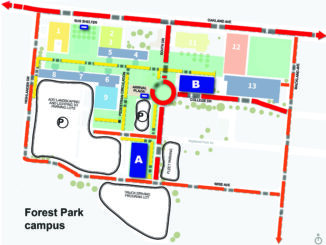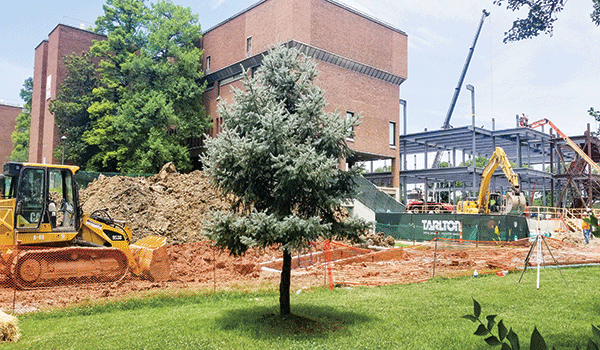
By Joshua Phelps
The Scene staff
Kevin Harrington was shocked when he learned that St. Louis Community College was planning to demolish a large section of a Forest Park classroom building.
The Chicago architectural historian is writing a book on mid-century modern architects Ben and Cynthia Weese. Ben helped his brother, Harry, design the Forest Park campus in the 1960s. They collaborated with renowned landscape architect Dan Kiley, who also designed the original Gateway Arch grounds.
“To throw away something — with all the money they put into it — is not a good idea,” Harrington said this spring after visiting Forest Park with his wife, Elaine.
“It’s kind of silly to throw away the energy that’s embedded in those buildings and pollute the atmosphere and destroy the climate when instead, you keep the buildings and continue to use them for the purpose for which they were built.”
STLCC plans to demolish A and B towers of the classroom building to provide walkways and green space around a new Center for Nursing and Health Sciences, which now is under construction.
Harrington is professor emeritus at the Illinois Institute of Technology. He said preserving Forest Park’s original buildings makes sense from an historical, architectural, financial and environmental standpoint.
“Although these buildings are (more than) 50 years old, they’re still good and effective for the purpose for which they were built,” he said.
The Center for Nursing and Health Sciences will be a four-story, 96,000-square-foot glass building with brick accents along Oakland Avenue. It will house modern classrooms, labs and offices for nursing, dental hygiene and eight other health-related programs considered vital in meeting future employment needs.
Construction on the $39 million project began in March.
The college plans to demolish A and B towers after the center is completed in 2019. They will be “obsolete,” according to Paul Zinck, STLCC vice chancellor of finance and administration.
“The reason that we’re building the new (center) is that those old towers, and much of the rest of the structure over there, are very inefficient from a standpoint of energy usage and heating,” he said.
“They’re built in an architectural style and decorated in such a way that is outdated and very expensive to modify,” Zinck added.
Last fall, STLCC Chancellor Jeff Pittman noted that the new Center for Nursing and Health Sciences will be a gold LEED-certified building. LEED stands for Leadership in Energy and Environmental Design. Certified buildings use less water and electricity, reducing greenhouse emissions.
When asked about other classroom buildings on the Forest Park campus that are just as old as A and B towers, Zinck said decisions on how to deal with them will have to be made in the future.
“They all have similar challenges in their adaptability and level of maintenance,” he said. “It really sort of becomes an equation of how much can you do at any one time and what is acceptable by way of college leadership and taking on new building projects.”
William Hubble, district division dean of academic affairs for health sciences, had no opinion on demolition of A and B towers, but he supports plans for a new Center for Nursing and Health Sciences.
“It’s going to be state-of-the-art,” he said. “It’s going to offer St. Louis Community College students the opportunity to train in a state-of-the-art facility with all new equipment.”
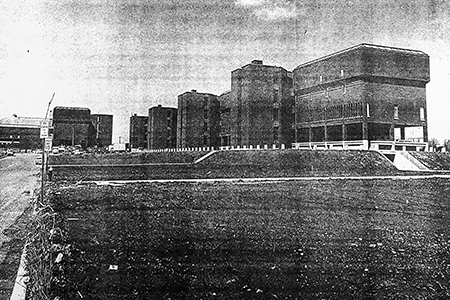
1960s showcase
Harrington isn’t the only architecture enthusiast opposed to the college’s plan to demolish A and B towers.
The Rev. Greg Johnson, associate pastor of Memorial Presbyterian Church in St. Louis, has argued against it in several articles for NextSTL.com, an online magazine that promotes “smarter development and civic engagement.”
In one article, Johnson noted that after Forest Park opened in 1967, construction continued for three more years, gaining national attention.
“By 1970, William Moore could note in ‘Against the Odds’ that 307 other community colleges already had sent representatives to Forest Park Community College to observe and learn,” Johnson wrote. “Forest Park was designed to be a leader.”
Johnson considers Harry Weese and Dan Kiley two of the “best architecture modernists in North America.”
Johnson also noted that the Forest Park campus won the first-ever 25-Year Award for buildings that have “withstood the test of time” from the St. Louis Chapter of the American Institute of Architects in 1994.
“The tragedy is that the Weese towers are not even in the footprint of the new (Center for Nursing and Health Sciences),” he stated in an email to The Scene. “These mid-century works by these truly great architects cannot be replaced once bull-dozed.”
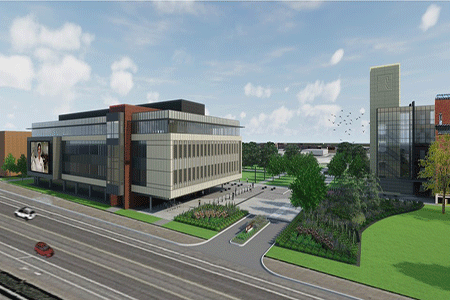
Mixed campus views
Michelle Swatek, executive director of the St. Louis Chapter of AIA, said the organization has decided not to take a position on demolition of A and B towers.
“We know it’s an iconic building,” she said. “And as architects, we value its merits and the design. We also know that there are times when buildings need to be changed for future needs.”
The STLCC Board of Trustees directed staff to investigate the possibility of a new center for nursing and other health-related programs in September 2016. The following February, board members hired KAI Design & Build to design the new building.
No one opposed the plan, including the demolition of A and B towers, during board meetings, according to Zinck and STLCC Communications Manager Nez Savala.
“It’s going to ruin the whole look of the place,” said Karen Kacer, Forest Park archivist and reference librarian. “I imagine they have a new look they want to put in. There’s nothing I can say that’s going to make any difference. I don’t really care as long as everything works OK.”
One of the programs that will move into the new building is funeral sciences. Student Makaya Bowers, 25, is excited.
“St. Louis is mainly a medical (community),” she said. “You have people from all over coming here to pursue school in medical or a medical field. For St. Louis Community College to have their own building to teach that, I think it’s beneficial for St. Louis.”
Assistant biology professor Tommie Frison agrees that a new Center for Nursing and Health Sciences is needed to replace outdated facilities.
Frison wonders how the college is going to find space for classes and other activities that now occur in A and B towers. For the past 10 years, he has been teaching in large lecture halls in A Tower.
“The demolition of the A and B towers seems to be, on the surface, a waste of space,” Frison said. “But I think that, based on what I understand of what they’re going to do with the space, (they want) to provide a very different entryway into the campus, which I think is positive, and provide additional green space.”
Janet Woodworth started working for STLCC in 1966, the year before the Forest Park campus opened. She retired last year as a secretary for social and behavioral health sciences.
In theory, Woodworth likes the idea of students having access to state-of-the-art training in health-related fields, but she isn’t sure how to feel about demolition of A and B towers.
“That’s going to displace a lot of people,” she said.
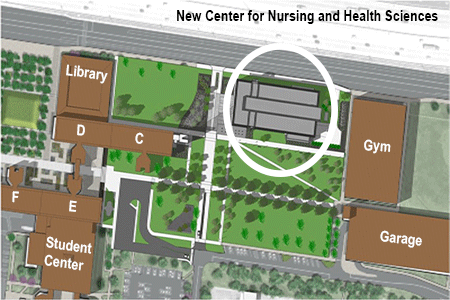
Brutalist architecture
In April of last year, Johnson wrote a piece for NextSTL detailing Forest Park’s original design.
Apparently, Harry Weese & Associates and Kiley designated space for a lake on campus, but that never materialized. A sunken, stair-step fountain was built, but in recent years, it has remained dry due to plumbing problems.
Johnson described the building architecture as “brutalist,” but warm red brick was used instead of “cold and expansive concrete” that was typical of the style. Harrington questions this description.
“One (term) that I did see used about the Forest Park campus is brutalist, and that seems entirely wrong,” he said. “There’s nothing ‘brutal’ about those buildings.”
Harrington called them “handsome.”
Window sizes on classroom buildings vary from floor to floor, which Harrington said was intentional.
“If you look at the facade of the east building, you can see there are four different treatments of the windows on each of the four levels,” he said. “The bottom level is mostly open, the second level is a series of narrow strip windows faced by projecting brick.
“On the third floor is a series of horizontal strip windows moving along the facade, and on the top floor there are very few windows because that floor is lit by the slight angle of the ceiling.”

